27, 28 MAR 2015

Megumi Matsubara will develop a two-day installation with the students and visitors of ESAV Marrakech, following her lecture “Wind & Lightness” given at the school in February:
Passionné de cinéma et/ou de graphisme? L’ESAV Marrakech vous invite à ses Journées Portes Ouvertes du 27-28 mars 2015 de 10h à 19h.
Au programme : du 25 au 28 mars
Performance visuelle et sonore: workshop work-in-progress avec Megumi Matsubara
14 JUN 2014 6PM

Exhibition – Book signing – Reading with music by Megumi Matsubara (language: Japanese/English) at Librairie des Colonnes bookstore
Exposition – Signature – Lecture poétique sonorisée par Megumi Matsubara (langue: japonais/anglais) à Librairie des Colonnes
.
Megumi Matsubara reads her work The Tale of the Japanese and the Mosquito. The reading will be followed by a presentation of her other titles including A proposal for a textbook to learn Braille, English, and other languages. She will introduce the details and structures behind those titles, exhibiting her related works in the store of Librairie des Colonnes.
Hosted by: Simon-Pierre Hamelin (director, Librairie des Colonnes)

31 May - 30 Sep 2014
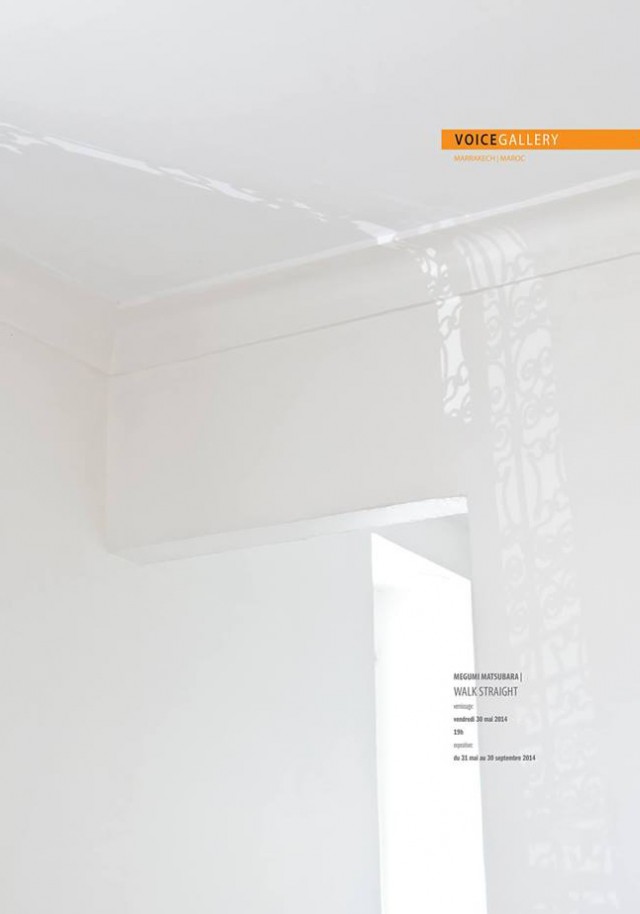
Voice Gallery is pleased to invite you to the private view of the solo show Walk Straight by Megumi Matsubara, held in the spaces of the gallery in Marrakech on 30 May 2014 at 19:00.
The Japanese artist presents a complex project composed of two different works: the first nucleus is disposed along the vertical visual axis the spectator encounters entering the gallery; the second part is represented by the video installation present in the environment that is oriented on the axis ideally orthogonal to the first. The two different installations intersect intensifying references and gazes and interlocking the different points of view… more
~ Text and conversation with the artist by Maria Giovanna Mancini
> full press-release in english with interview
> communiqué de presse français avec interview
> comunicato stampa italiano con intervista
26 Jul - 1 Dec 2013


In celebration of their ten years anniversary, Yamaguchi Center for Arts and Media (YCAM), commissioned Megumi Matsubara and Hiroi Ariyama of Japanese architecture firm Assistant to design a temporary summer structure, in collaboration with YCAM’s educational program team. Korogaru Pavilion sits on the lawn of the cultural center known for its cutting edge technology-based art and media to Japan and the world, encouraging kids to meet the hybrid environment of technology, art, and nature.

Architects: Megumi Matsubara & Hiroi Ariyama / Assistant
Playground equipment designers: Daiya Aida, Kiyoshi Suganuma / YCAM
Structural engineers: Tokyo University of the Arts, Kanada Structural Design Lab / Mitsuhiro Kanada & Miki Ozeki
Client: Yamaguchi Center for Arts and Media (YCAM)
Location: Yamaguchi-city, Japan
Principal use: Summer indoor play park equipped with media art (temporary building)
Building area: 407.27m2
Total floor area: 407.27m2
Structure: Wood
Construction: 15 May – 25 July, 2013
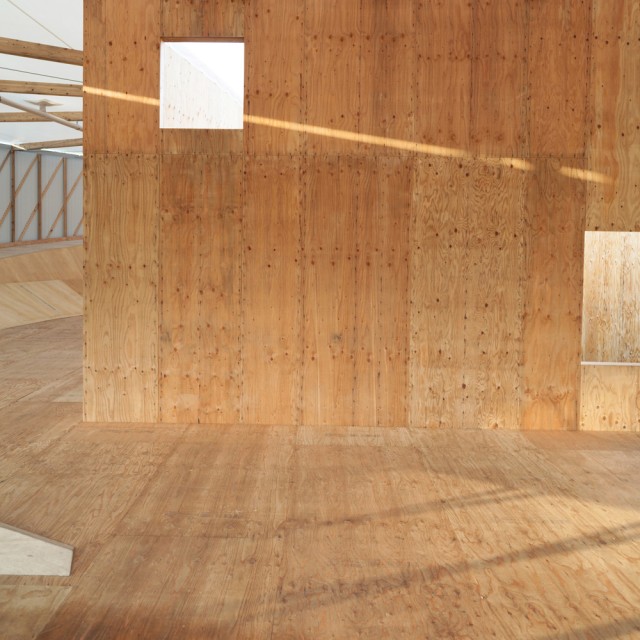
10 - 15 June 2013
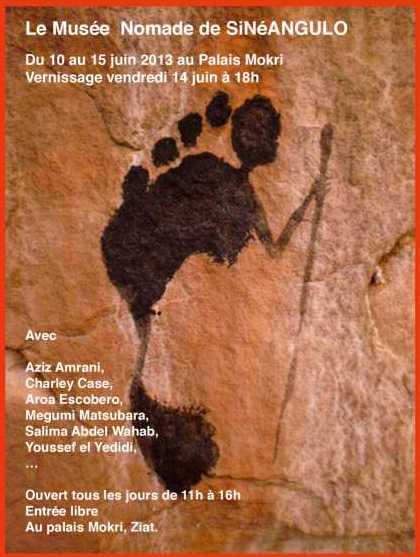
Le Muzoo: traveling museum conceived by Sinéangulo stops at Fes. It was initiated by the Caza de Oro artist’s residence in Ariege, in the French Pyrenees. Le Muzoo moves between the UK and Morocco, and will be pitching its tent at the Palais Mokri during the Sacred Music Festival. Sinéangulo’s adventure is composed of fresco, tent, clothes, collected stones. Megumi Matsubara adds a modest element to their show.
Artists: Charley Case and the group Sinéangulo (Aroa Escobero, Salima Abdel Wahab, Youssef el Yedidi, Aziz Amrani, Charley Case), guest artist Megumi Matsubara
Vernissage: 18:00- 14th June 2013
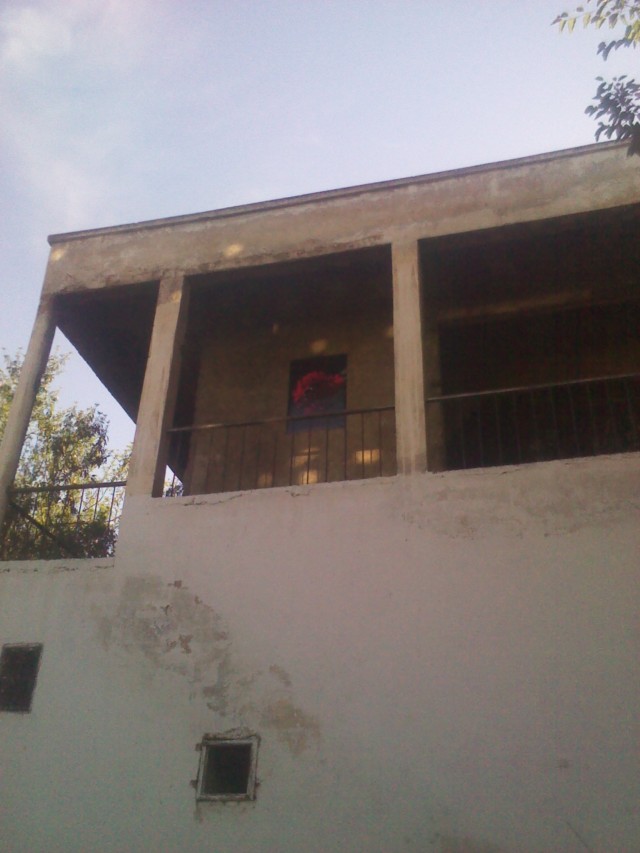
Geranium from a series Jnan Sbil, Megumi Matsubara, 2013
Site-specific photographic installation spotlit by sunlight
14 - 20 May 2013

Morocco-based Megumi Matsubara and Angolan-born Nástio Mosquito, two artists who constantly defy stereotypes, will delve into the essence of what culture is, and what it means to meet someone else. The fleeting, illusory sounds and lights that they have conjured will turn the first floor of the YCC into a space where encounters both simple and complex will unfold.
TICAD V, the fifth international conference will be held between 1st-3rd of June 2013 in Yokohama, Japan. It is expected to draw a big general interest on Africa. In May 2013, Yokohama Arts Foundation organizes a related pre-event, “Sound/Art – Tuning in to Africa” aiming to approach mutual understanding through the power of contemporary art and music, with exhibition, talk events and live performances.
Period: 14 (tue) – 20 (mon) May, 2013
Location: Yokohama Creative city Center (YCC) 1F Hall
Organized by: Yokohama Arts Foundation
Supported by: Culture and Tourism bureau of Yokohama city / Embassy of Angola / Embassy of Kenya /Embassy of the Republic of Mali / The Africa Society of Japan
For entire program & further information: http://saa.yafjp.org/
> about the work Megumi Matsubara & Nástio Mosquito
23 Mar - 21 Apr 2013

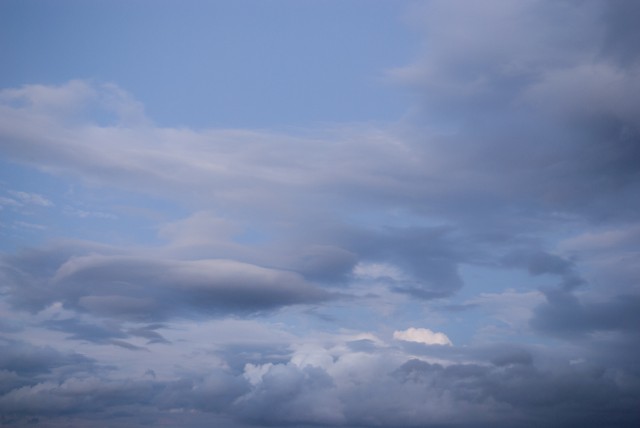 Megumi Matsubara participates in a group show with Fallen Objects
Megumi Matsubara participates in a group show with Fallen Objects
(3000 postcards of a picture of the sky scattered face up on the floor)
SIDE CORE – SHINTAI/BAITAI/GRAFFITI
Curator Hiroshi Egaitsu
Artists EYE, Oyama Enrico Isamu Letter, Ryota Kikuchi, Kota Takeuchi, Katsuhiko Hibino, Ryo Matsumoto, Shuhei Nishiyama, Tohru Matsushita, Megumi Matsubara, QP, Miyuki “Pai” Hirai
Location Terratoria / Terrada Warehouse (Tokyo, Japan)
Further information: http://sidecore.net
23 - 24 Mar 2013



3000 pictures recording the setting sun shown in sequence on building facades overnight until the sunrise.
–
Megumi Matsubara’s set of photography shown as Assistant’s public installation at:
ROPPONGI ART NIGHT
*Ta so kare / Ka wa tare means “Who is there?” in classical Japanese, each implying the time of sunsetting / sunrising twilight. It derives from the feeling when you are in the room, having a familiar silhouette at the door walking to you at sunset or leaving you at sunrise, but the light makes it difficult to recognise the face. The public installation implies the original meaning of the names of two countries Morocco where the photographs were taken, and Japan; one meaning the setting sun, the other the rising sun.
















